
When you hear the term “home remedy,” do you conjure up images of your great grandmother with her special mystery jar of black salve, or your mother chasing you around the kitchen trying to get you to take her famous “anti cold” concoction that smelled strangely like pungent spring grass?
While you may not have ever known what your great grandmother or mother put in their home remedies, somehow, miraculously, they seemed to work!
Of course, not all “home remedies” hold the same value; some are just craziness. However, there is an abundant supply of things found in nature that, when used responsibly, can do therapeutic works of wonder.
Because we live in a culture that is quick to demerit anything that does not have a price tag, home remedies are often prematurely discredited and brushed aside for expensive, patented products. Our reliance on pharmaceuticals is at an all time high, and this is coming at a cost.
Consider antibiotic use
According to the CDC, more than 10 million courses of antibiotics are given each year for non-infectious conditions. In addition, if you have been given a course of antibiotics and do not finish it, you leave room for leftover bacteria in your system to become resistant to future antibiotic use.
Prescription drug use on the rise
A recent study found that 7 in 10 Americans are now on prescription drugs. Fifty percent of those on prescription drugs are taking two drugs, while 20 percent are on five or more different drugs.
With the constant bombardment of commercials encouraging us all to check with our doctor to take a new medication for every ailment under the sun, that figure is not all that surprising.
Many doctors are quick to pull out the prescription pad even if they don’t think that the patient really needs it. One study found that more than half of physicians will prescribe a specific brand or type of medication when asked for it.
While some medications may help people live longer and improve lives, many hurt far more than they help. There has been a long list of prescription drugs that were approved by the FDA only to find out later that they were extremely dangerous, even deadly.
But… some doctors do use home remedies
When it comes to home remedies, many people are afraid to use even what seems to work because they fear that their doctors would disapprove. However, many doctors embrace home remedies and respect them as a valuable addition to conventional treaments.
We asked our in-house expert, Dr. Joshua Levitt, what home remedies he embraces for his family. Dr. Levitt is a naturopathic physician specializing in integrative medicine.
Dr. Levitt has great respect for the therapeutic value of “water therapy,” which dates back to ancient Egypt. The world’s oldest medical records make references to the beneficial use of water in treating various conditions. Hippocrates, known as the “father of modern medicine,” was the first to write on healing diseases using water.
“When pain seizes the side, either at the commencement or at a later stage, it will not be improper to try to dissolve the pain by hot applications… A soft large sponge, squeezed out of hot water and applied, forms a good application… A soft fomentation like this soothes pains, even such as shoot to the clavicle. The bath soothes the pain in the side, chest and back; concocts the sputa, promotes expectoration, improves the respiration, and allays lassitude; for it soothes the joints and the outer skin, and is diuretic, removes heaviness of the head, and moistens the nose…. Such are the benefits to be derived from the bath.”
The following 10 water-based home remedies are recommended by our expert physician, who uses them regularly for himself and his family:
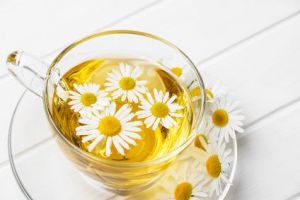 Tea
Tea
Dr. Levitt notes that his first defense against virtually all minor ailments starts with tea. For sore throats he recommends a tea made with ginger, raw honey, lemon and cayenne, and often adds Osha root, licorice and/or slippery elm.
Licorice root may just be one of the most overlooked herbs when it comes to healing. This herb’s mucus-producing properties result in a less sticky variety of mucus in the bronchial passages, meaning it is easier to clear. Several cough syrups and lozenges contain a percentage of the extract in their ingredients.
Osha root, also known as bear root, is a native North American perennial herb that is a member of the parsley family. Used for generations for a number of ailments, this root used in tea can help loosen phlegm and numb a sore throat.
For nausea, Dr. Levitt goes to ginger first. Ginger is packed with so many powerful compounds that it should be considered a staple in any healthy diet. In fact, it offers so many medicinal properties that some feel it should be a must in the medicine cabinet, as well.
Compounds in ginger help to sustain digestive enzymes, which neutralize acids, supporting the entire digestive process. As a result, stomach discomforts such as nausea, gas, bloating, diarrhea and constipation can be relieved.
A tea made from peppermint, chamomile and fennel is just what the doctor ordered for stomachaches, gas and bloating. For evening stress relief (which we all have way too much of), a warm cup of passionflower, chamomile, peppermint and catnip tea allows the cares of the day to melt away.
Baths
There is just something about a warm bath that seems to make sick kids, and adults, feel better. Probably one of the best known side effects of a warm bath is the way it reduces overall tension in the body and mind. For an even more relaxing bath, Dr. Levitt suggests adding a few drops of lavender essential oil. Lavender has been proven to reduce the stress hormone cortisol.
Another great addition to a warm bath is Epsom salt. When Epsom salt is dissolved in warm water it is absorbed through the skin and can naturally replenish lost magnesium. This magnesium helps the body produce serotonin, the mood elevating chemical in the brain.
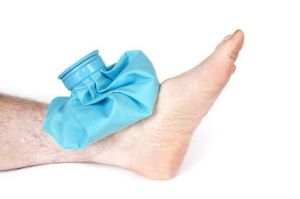 Ice
Ice
Possibly one of the best first aid treatments for bruises, sprains and strains, ice can bring quick relief and is a great way to reduce swelling and pain. Use ice for 15 minutes each hour for the first 24 hours after an injury occurs.
If you have sustained an injury to the bottom of your foot, try freezing a bottle of water and rolling it on your foot. Dr. Levitt suggests freezing some water in a small paper cup and peeling away the sides a bit at a time as the ice melts. A DIY gel pack can be easily made by mixing 2 parts of water with one part of rubbing alcohol, and freezing the mixture in a ziplock bag.
Gargles
Gargles, says Dr. Levitt, are a valuable treatment for all kinds of mouth and throat conditions. Gargling with salt water, diluted food-grade hydrogen peroxide, herbal infusions or decoctions can help reduce the symptoms of sore throats, tonsillitis, bad breath and irritation or inflammation of the tongue or gums.
A 2005 study done in Japan found that gargling even with plain water during the cold season helped to prevent more upper respiratory tract infections than gargling with a mild antiseptic mouthwash.
To gargle with salt water, dissolve ½ teaspoon of sea salt in eight ounces of warm water. If you can’t stand the taste of salty water, you can also gargle with water mixed with a little lemon juice and honey. Gargle for twenty seconds, spit out the gargle wash and rinse your mouth with fresh water. Repeat as many times as needed for relief.
Steam
Nasal congestion, runny or stuffy noses are a recipe for crankiness, and can severely interfere with daily living. Dr. Levitt is a father and knows just how hard it is to keep his kids happy when the sniffles hit his house. He finds that one of the best home remedies for congested, runny or stuffy noses comes from an herb-infused steam treatment.
Simply add thyme and/or eucalyptus to water, cover it and bring it to a boil. Remove from the heat and place in a shallow bowl. Place your face over the bowl and cover your head with a towel. Breathe slowly and deeply; be careful not to get your face too close to the water.
Eucalyptus oil is made from the leaves and tops of the branches of the eucalyptus tree. The leaves contain tannins, which are thought to reduce inflammation, plant-based antioxidants, and volatile oils. Its medicinal values are many and include:
- Analgesic – Relieves pain
- Antibacterial – Kills bacteria
- Anti-catarrhal – Removes excess catarrhal (inflammation of the mucous membranes)
- Anti-infectious – Fights infection
- Anti-inflammatory – Reduces pain and inflammation
- Antiviral – Fights viral infections
- Insecticidal – Kills insects
- Expectorant – Relieves respiratory problems
Dr. Levitt also suggests steam showers with the vent off and a cover over the top of the shower door. Place a few drops of eucalyptus essential oil in a bowl in the shower, and enjoy the therapeutic armona.
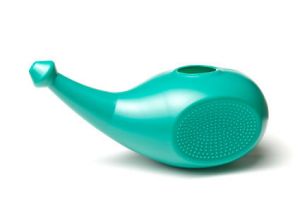 Nasal irrigation
Nasal irrigation
For allergy and nasal or sinus congestion, Dr. Levitt recommends a Neti Pot, also known as a nose bidet. This ancient nasal irrigation tool is an inexpensive and effective way to reduce nasal stuffiness.
Make saline by adding ¼ tsp finely ground salt and a pinch of baking soda to 1 cup warm water. There are also several other nasal irrigation devices, including the simple saline nasal spray.
Using the pot
- Tilt your head over the sink and place the spout in the upper nostril.
- Gently pour the water into your nostril.
- The water will wash the nasal cavity and flow out the other nostril.
- Repeat with the other side.
Warning: Do not use tap water or any unsterilized form of liquid in your Neti Pot. Be sure to clean your pot thoroughly after each use and allow it to air dry.
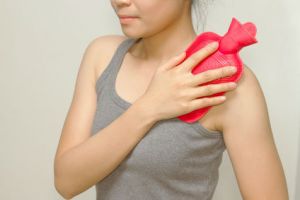 Hot water bottle
Hot water bottle
Dr. Levitt admits that even though they are kind of “old school,” hot water bottles can come in really handy. Not only can this old fashioned method of keeping you warm help bring comfort and promote stress reduction, it is also useful for muscle soreness, cramps and back pain. Women who suffer from menstrual cramps will appreciate a hot water bottle treatment.
Hot water bottles also aid in digestion and can be your best friend if you come down with the flu. Warm, moist heat is a natural therapy for arthritis, and is especially great for stiff and sore hands. Young children who just don’t feel well will relax and sleep well with a hot water bottle beside them. Now that hot water bottles are experiencing a comeback of sorts, you can find them in all sorts of whimsical colors and shapes.
Wet socks
Although Dr. Levitt is the first to admit it sounds crazy, wet socks are a great home remedy for both colds and low grade fevers. The “wet sock treatment,” as it is commonly called, is often prescribed by physicians at Bastyr Center for Natural Health, and involves putting on ice-cold socks and actually sleeping in them. While it may take you a little while to get over the chilliness of this suggestion, this low cost, no side-effects home remedy actually seems to hold some real therapeutic value.
Dr. Levitt tells us that the wet sock treatment, also known as a “heating compress,” makes the body work to heat up the cold, wet socks. When called to do this, the body immediately increases blood circulation and decreases congestion in the upper respiratory passages, head and throat.
The increase in circulation also boosts the immune system, priming it for battle against whatever is going on. Even though it seems like wearing wet socks to bed would make you really uncomfortable, it actually tends to promote relaxation. This treatment even seems to bring pain relief and facilitate healing during acute infections.
Start the wet sock treatment at the first sign of an illness, and repeat for three nights in a row as a part of an overall healing regimen that includes hydration, great nutrition and whole food supplements to boost the immune system.
How to do it:
- Soak a pair of thin socks in ice water and wring them out so that they are not dripping.
- Take a hot ten-minute bath, then place the cold socks on your feet.
- Cover the thin socks with thick, dry socks, preferably made of wool.
- Pull on some sweatpants or pajama bottoms and keep an extra pair closeby.
- In the night, you may wake in a cold sweat; if so, change into some dry bottoms.
- The socks will be dry in the morning.
Hot compress
The use of hot compresses for relief from a number of conditions including infections, boils, styes and abscesses is nothing new – their use is noted throughout history. Hot compresses relax muscles and tissues and are a useful application for joint and nerve pain, as well as for muscle aches or injuries.
When applied to the affected area, the heat causes an increase in blood circulation which (depending on the injury) can reduce inflammation, relieve congestion and help reduce pain.
Dr. Levitt suggests that a compress using herbal teas may also prove beneficial, depending on the condition being treated.
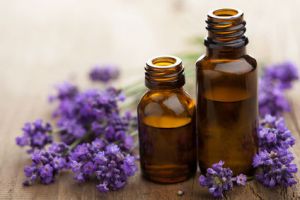 How to make an essential oil hot compress:
How to make an essential oil hot compress:
Make a tea with essential oils or herbs and dip a clean, cotton cloth in the infusion. The National Center for Complementary and Alternative Therapy suggests a mixture of lavender, valerian and chamomile because of their relaxing, balancing and soothing properties.
- Fill a small bowl with very warm tap water.
- Add 12 drops of organic essential oil.
- Dip a clean and absorbent cloth in the infusion and wring it out.
- Place the cloth on the affected area for 10 minutes and repeat as necessary for relief.
Contrast hydrotherapy
To reduce pain and speed healing, Dr. Levitt recommends alternating hot and cold therapy. Depending on the nature and location of the pain, there are several ways to administer contrast hydrotherapy.
You can immerse the affected body part in bowls or buckets of water, apply hold and cold compresses or take a hot/cold shower. For each method, do three minutes of hot therapy followed by two minutes of cold therapy and repeat three times, ending on cold.
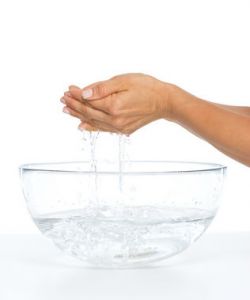 We want to thank Dr. Levitt for sharing his water therapy wisdom with us, and encourage everyone to consider the merit of some of these cost effective, safe and beneficial water-based home remedies.
We want to thank Dr. Levitt for sharing his water therapy wisdom with us, and encourage everyone to consider the merit of some of these cost effective, safe and beneficial water-based home remedies.
-The Alternative Daily

